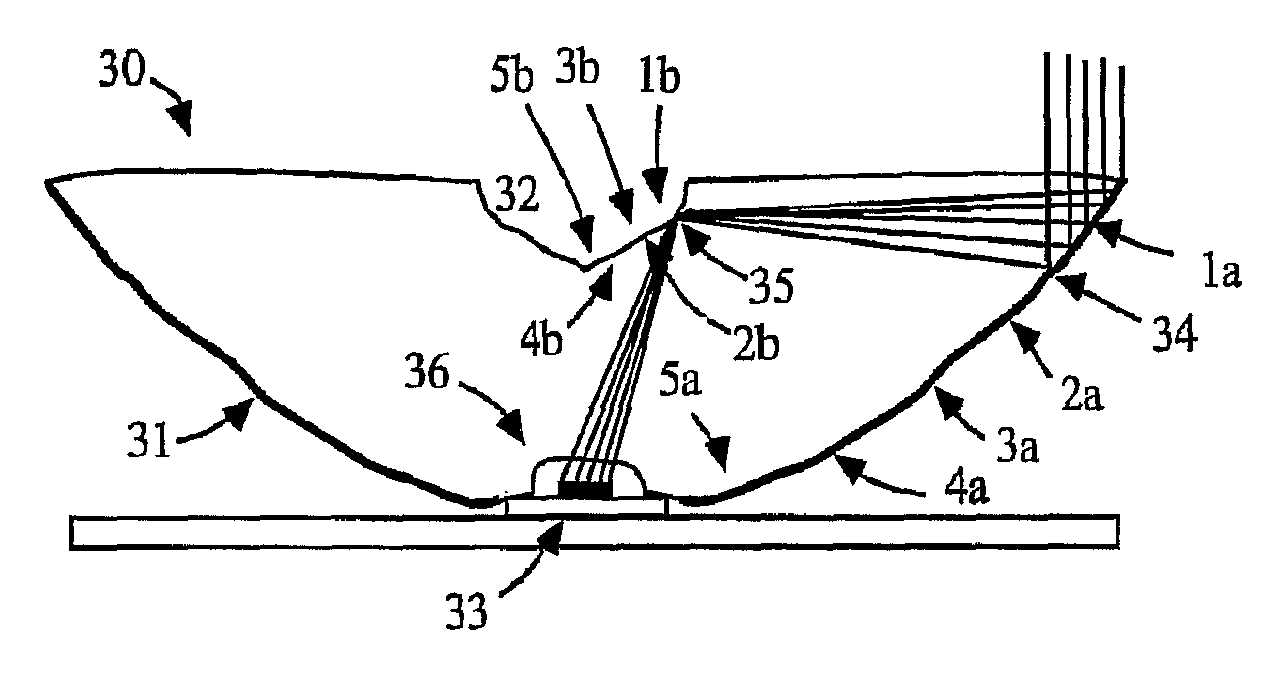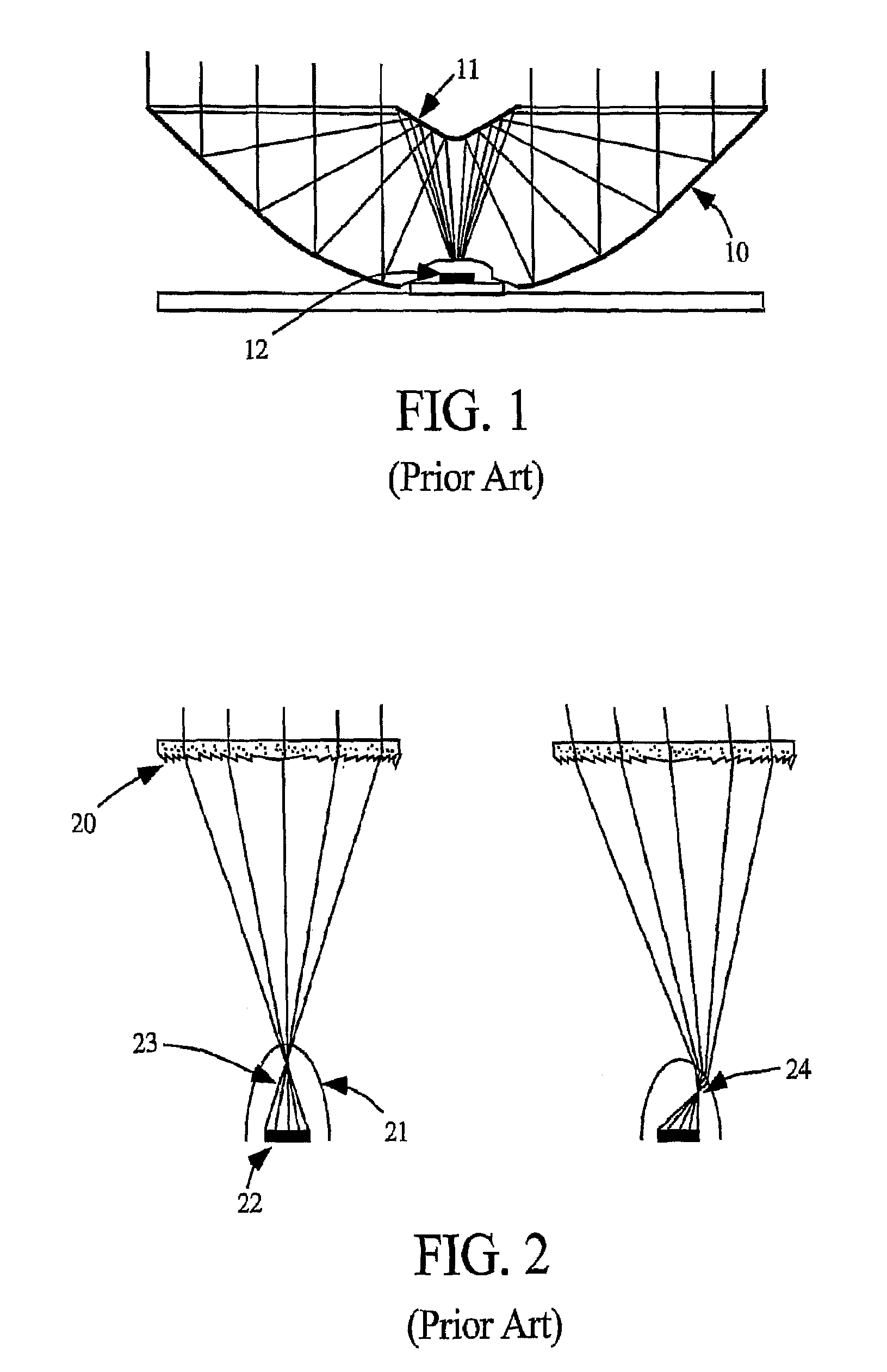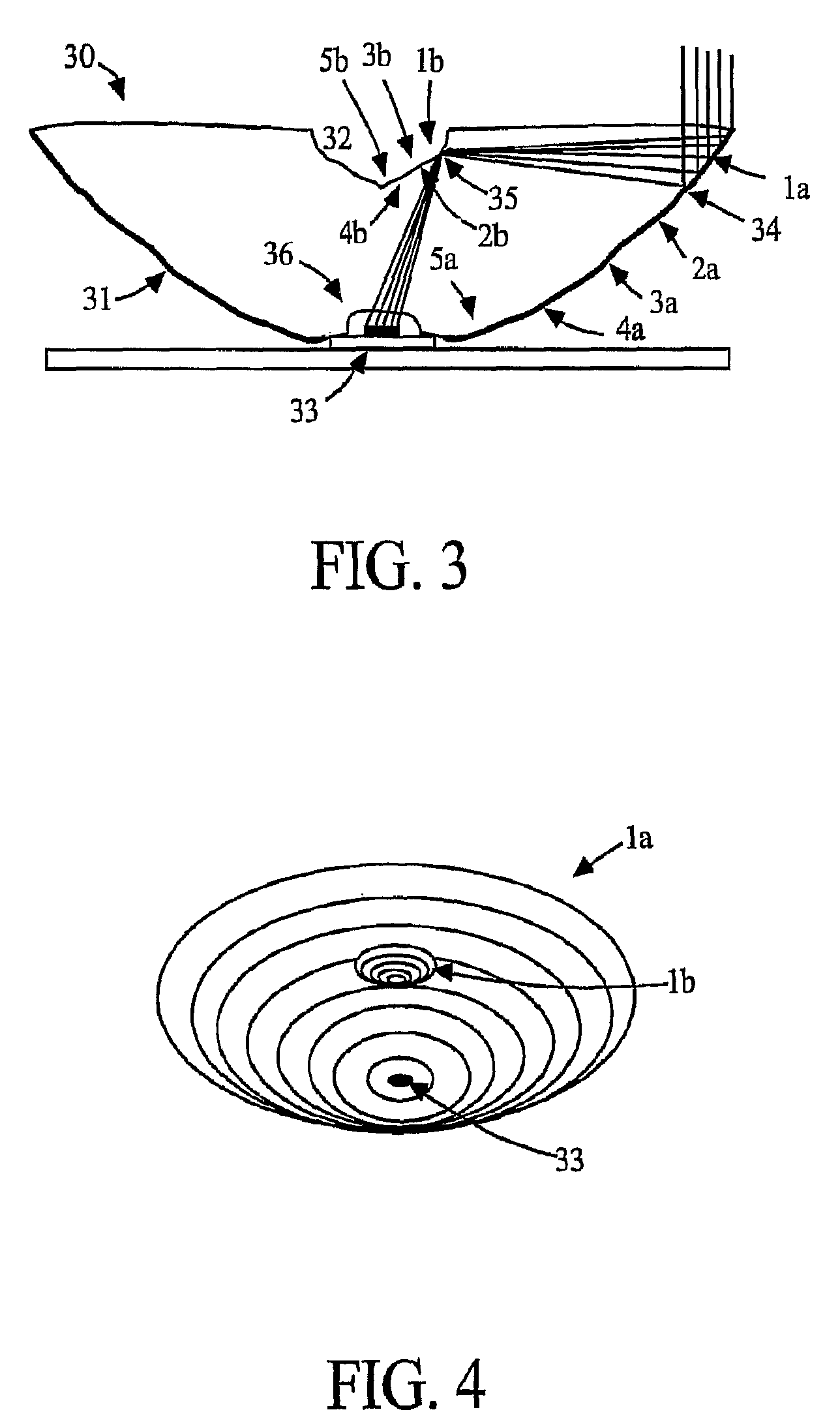Multi-junction solar cells with a homogenizer system and coupled non-imaging light concentrator
a solar cell and homogenizer technology, applied in solar heat systems, solar thermal energy generation, lighting and heating apparatus, etc., can solve the problems of limited utility, low efficiency, and low efficiency of solar cells for electrical energy production, and achieve high efficiency and moderate irradiance non-uniformity
- Summary
- Abstract
- Description
- Claims
- Application Information
AI Technical Summary
Benefits of technology
Problems solved by technology
Method used
Image
Examples
Embodiment Construction
[0027]This invention makes use of the invention, including embodiments and design methods, described in U.S. Provisional Application No. 60 / 703,667 titled “Free-Form Lenticular Optical Elements and their Application to Condensers and Headlamps”, filed Jul. 28, 2005 by some of the present inventors, which is incorporated herein by reference in its entirety.
[0028]An optical system constructed in accordance with one embodiment of the invention is shown in FIG. 3 as a most preferred embodiment. The entrance aperture 30 and the exit aperture 36 can be flat. Segmented secondary mirror 32 is substantially co-planar with the entrance aperture 30 of a primary mirror 31. The segments on the primary 1a, 2a, etc. are essentially parabolic, each with a focus at the associated mirror segment 1b, 2b, etc. on the secondary and along the vertical axis (not shown). The secondary mirror segments 1b, 2b, etc. are essentially elliptical with foci at the locations of the associated primary mirror segment...
PUM
 Login to View More
Login to View More Abstract
Description
Claims
Application Information
 Login to View More
Login to View More - R&D
- Intellectual Property
- Life Sciences
- Materials
- Tech Scout
- Unparalleled Data Quality
- Higher Quality Content
- 60% Fewer Hallucinations
Browse by: Latest US Patents, China's latest patents, Technical Efficacy Thesaurus, Application Domain, Technology Topic, Popular Technical Reports.
© 2025 PatSnap. All rights reserved.Legal|Privacy policy|Modern Slavery Act Transparency Statement|Sitemap|About US| Contact US: help@patsnap.com



